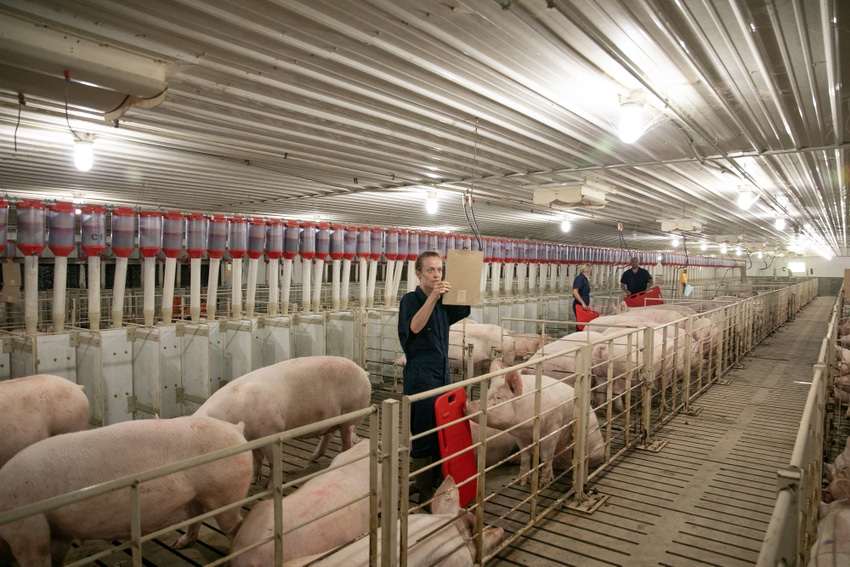Sow management: top trends to watch
Three industry veterans discuss sow management trends and offer predictions for the future.
May 19, 2021

What does the future hold for the pork industry? That’s a question on many pork producers’ minds. And while the future is unknown, taking a closer look at trends can shed a light on opportunities to improve sow operation profitability and performance, according to Pig Improvement Company (PIC), a global leader in swine genetics.
Three industry-leading experts recently shared what they think are the biggest trends to watch:
1. Production costs
“Challenges from the past year have changed the focus from increasing performance to optimizing performance through more efficient and sustainable cost of production strategies. That’s especially true with feed prices on the rise,” said Sergio Canavate, DMV, technical services manager with PIC.
Focusing on cost of production puts more emphasis on enhancing foundational management practices.
“We need to ask ourselves, are the right feed management strategies in place? Is body condition scoring accurate and consistent? How can we manage sow body condition better through feed?” said Fred Kuhr, production supervisor for sows and finishing at Dykhuis Farms.
Feed is a producer’s largest cost so grow-finish feed efficiency must also be a focus, according to Mark Knauer, Ph.D., associate professor and extension swine specialist at North Carolina State University. He encourages producers to find ways to influence grow-finish feed efficiency prior to weaning.
“If you can wean a quality litter, it’s going to help pig survival, performance, and ultimately, throughput,” explained Knauer. “One way is to maximize weaned pig quality using known practices like increasing weaning age, batch farrowing or improving gilt acclimation into the sow farm.”
2. Gilt and sow management advancements
Gilt management isn’t a new conversation, but it’s more relevant now than ever before. “Breeding gilts at the right age and weight and keeping them in optimal body condition from the start will increase lifetime productive performance and retention in sow herds,” said Canavate.
If a sow has been well cared for since before first breeding, she’ll probably require less maintenance to do her job, which is raising quality pigs. Trial data shows sows in ideal condition in parity one weaned seven more piglets across her next three parities than fat sows.
“New technology will bring new opportunity to evaluate herds based on average sow age, the length of time sows stay in the system and how fast we have to turn,” said Kuhr. “We’ll be able to look at more data points to help predict how long a sow will stay in the system and offer insights for better gilt selection.”
3. Litter size
Increasing litter size has been a primary focus for North American operations over the past decade. But Canavate noted that the focus on litter size will likely evolve to include more factors like piglet quality at birth and weaning.
“What does an optimal litter size look like for an individual operation?” asked Knauer. “Unless U.S. producers use more nurse sows, provide supplemental nutrition for piglets during lactation or bolster sow lactation feed intake, litter size may need to plateau at some point.”
Reduced emphasis on litter size would allow for increased emphasis on other traits, such as progeny feed cost.
4. Artificial intelligence and labor
Strategies to reduce labor needs while maintaining productivity and sow well-being are and will continue to be necessary.
“Feeding pre-farrowing to reduce the need for farrowing assistance is one example,” said Knauer. “Smart barns and leveraging artificial intelligence technologies are another example and will go a long way to help control barn environment, organize pig flows and manage data.”
How do producers prioritize the sow farm’s key strategic areas to improve performance without increasing labor requirements?
“We need to find ways to adapt our management strategies to the reality of labor limitations,” said Canavate. “One example here might be revisiting breeding techniques like post-cervical insemination. If well implemented, the technique allows producers to breed the same number of females with a smaller labor force.”
5. Real-time data
“The sow business is going to experience a huge upsurge in technology,” said Kuhr. “Employees are going to be exposed to more data, quicker. And, decision-making will get easier because new technologies will help employees make more informed decisions on the spot.”
Sow farm data has been highly underutilized, but that could change with more advanced technology.
“Artificial intelligence algorithms will help get real-time answers to find more value from existing data,” said Knauer. “Five years ago, there were hardly any swine-oriented companies looking at artificial intelligence technologies. But now we’re seeing new companies move that direction to help manage farms more efficiently.”
Paperless technology, like handheld scanners, will be more common on sow farms. Cavante predicts data capture and information management will speed up.
6. Welfare
The industry is evolving with initiatives like California’s Proposition 12 and consumer concerns over antibiotic usage.
“I'm seeing more group housing, less antibiotics and enhanced biosecurity protocols,” said Canavate. “These evolutions will require unique management strategies to keep pigs healthy and stay profitable.”
“How can we manage our animals more efficiently, with the highest welfare standards?” asked Kuhr. “We absolutely have to take care of the animals and they will take care of us.”
While no one knows exactly what the future holds, these six trends will shape the pork industry’s future. It’ll be important to consider how to evolve individual herds to stay ahead of them.
You May Also Like



